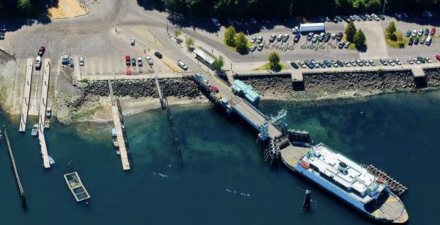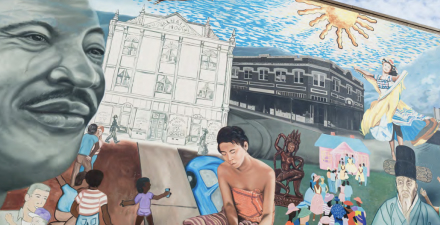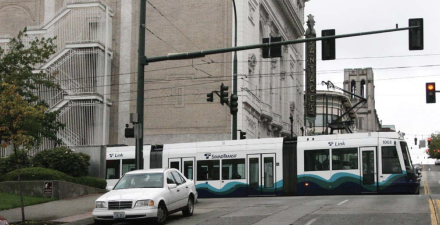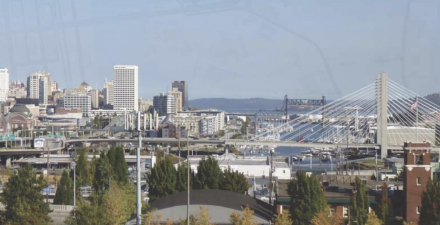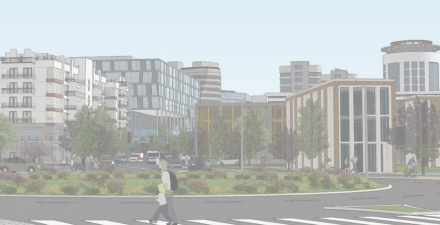One Tacoma: Comprehensive Plan
Everyone in Tacoma deserves a city that keeps us safe, lets us live sustainably with our land and water, and contributes to our physical, social, and economic health.
The Comprehensive Plan Update
The City’s Comprehensive Plan was most recently updated and adopted by the Tacoma City Council on June 24, 2025. You can review the PDFs below to review the updated Plan in its entirety:
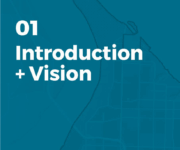 |
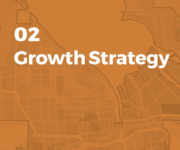 |
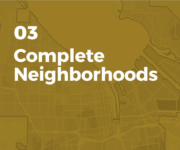 |
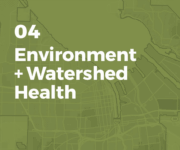 |
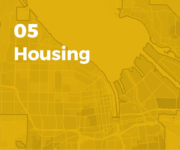 |
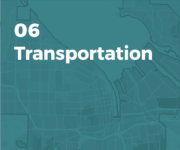 |
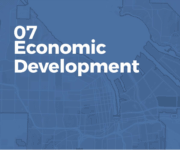 |
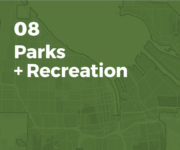 |
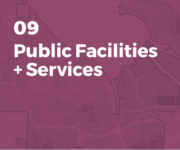 |
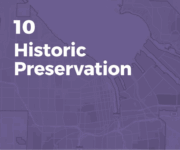 |
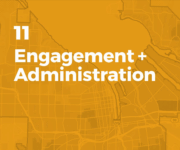 |
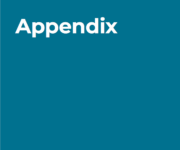 |
The City’s 25-Year Comprehensive Plan: One Tacoma is one of the strategic plans required by the Washington State Growth Management Act (GMA) that is updated by the City every 10 years.
Additional Information
-
What is One Tacoma?
The One Tacoma comprehensive plan is our blueprint for a future where every resident lives in a vibrant, inclusive, and more equitable community. It establishes the City’s future vision and policy direction, as well as guiding growth and development over the next 25 years. It helps us decide how to use our land and water, improve our city streets and transportation, build a variety of housing options that satisfy the needs of our community at every stage of life, and maintain public facilities and services like parks, libraries, utilities, and more.What is the goal of One Tacoma?
The goal of this plan is to make Tacoma a “15-minute city” where daily essentials like groceries, schools, parks, and healthcare are just a safe and short walk, roll, or bus ride away for everyone.How does the plan encourage economic growth?
We are strategically planning for a future that accommodates more people and jobs while also preserving the character of our distinct neighborhoods and protecting our natural environment.We understand that a growing city must incubate a growing economy where families can not only live but also work. That is why the City of Tacoma is planning to accommodate 60,000 new housing units and 94,000 new jobs by 2050.
What about housing?
Since 2017, 80% of new housing has been in multi-dwelling developments, with 40% located Downtown and 30% in other mixed-use centers, showing our commitment to dense, transit-oriented growth.This shows how we are already fostering well-designed neighborhoods that are built for people, not just cars. One Tacoma continues this path, while celebrating the unique character of our city’s diverse neighborhoods, respecting their history and culture while encouraging creative and resilient design. The plan encourages a mix of housing types and small-scale businesses within neighborhoods to increase walkability and access to daily needs.
More specifically, the plan calls for 70% of new housing to be affordable to households at or below 100% of the Area Median Income to eliminate housing cost burden. The City has an Affordable Housing Fund and is exploring a range of tools, including inclusionary zoning and a community land trust, to create and preserve affordable homes.
How does One Tacoma protect the environment?
This comprehensive plan integrates our Climate Action Plan and Climate Adaptation Strategy to build a more resilient city that is prepared for the impacts of climate change, such as extreme heat and flooding. One Tacoma maintains and enhances a network of open space corridors to support recreation, wildlife habitat, and connect critical areas. This also helps our city to expand tree canopy cover and reduce greenhouse gas emissions.Does the plan address transportation?
Yes! One Tacoma lays out a vision to give Tacomans real choices for how they get around, making walking, biking, and transit safe, convenient, and reliable options. By making significant investments in our transit network, including the extension of the Link Light Rail to the Tacoma Dome, we better connect our neighborhoods to the entire Puget Sound region. Through thoughtful, accessible transportation that supports complete neighborhoods and expands mobility choices, we’re creating a more connected, inclusive Tacoma where everyone can thrive. -
Growth Strategy
Coordinating housing, transportation, and commercial development ensures Tacoma is implementing policies that support growth, strengthen neighborhoods, and ensure residents have access to a high quality of life.Complete Neighborhoods
Tacoma’s neighborhoods should meet local needs and maintain their distinct character. The City is developing smart design policies that showcase Tacoma’s unique identity, cultivate beautiful places, and celebrate the city’s diverse architectural heritage.Environment & Watershed Health
Our natural resources offer valuable ecological, aesthetic, and cultural benefits. The City’s land use policies include environmental protections and regulations to ensure our land and water stay healthy for future generations.Housing
Tacoma wants to be a city with safe and healthy housing options for all residents. The City’s policies influence the location, style, and income mix of new housing stock, ensuring varied access to opportunity, stability.Transportation
Tacoma’s transportation policies support growth by prioritizing transit-oriented development and infrastructure investments in key areas. This approach creates walkable communities with integrated transportation, housing, jobs, and amenities.Economic Development
As a designated Metropolitan City, Tacoma is planning for 94,000 new jobs by 2050. Through strategic economic initiatives, the City is building a framework that will attract new businesses, support existing ones, and ensure alignment with existing land use policy.Parks & Recreation
Parks, trails, and open spaces enrich Tacoma by connecting people to their community and their surrounding environment. The City is committed to safeguarding these spaces and enhancing them for the future, with an emphasis on improving access for all Tacomans.Public Facilities & Services
A city with well-designed and maintained public facilities and responsive city services build community trust, resilience, and pride. The City is planning to manage its facilities and services in a way that meets the community’s needs and provides fair, high-quality service to all Tacomans.Historic Preservation
Tacoma’s preservation program protects our historic architecture and cultural sites. The policies outlined in this chapter ensure that historic buildings are part of our collective future and contribute to citywide sustainability goals and economic vibrancy. -
Planning Commission Review
The Planning Commission completed its review of the One Tacoma Plan update through a public process in April 2025.
Planning Commission Letter of Recommendation to City Council and Findings of Fact and Recommendations Report (April 23, 2025)
One Tacoma Preliminary Determination of Environmental Nonsignificance (SEPA File Number: LU25-0084)Workplan, Public Engagement Plan, and Engagement Summary
Workplan for the Comprehensive Plan Update – 2025
A workplan was developed to provide background information on the One Tacoma Comprehensive Plan update, including detailing phases of the project and the regulatory requirements for updating comprehensive plans.
One Tacoma Community Engagement Plan:
The City of Tacoma updated its Comprehensive Plan (to 2050), including refreshing its Strategic Plan (to 2035), and developing a Community Safety Action Strategy. All three plans rely on community engagement to guide policies and strategies. A long-standing priority for Tacoma is ensuring that engagement fosters equity and empowerment. While the Growth Management Act (RCW 36.70A.140) requires “early and continuous public participation,” Tacoma goes beyond the minimum, striving for inclusive and meaningful engagement in all decisions.Over the years, Tacoma has conducted extensive community engagement across many initiatives. Other partner agencies also conducted planning engagement activities on a similar timeline as adoption of the updated Comprehensive Plan. Recognizing there were some gaps in participation with previous community engagement efforts, a strategy was developed to maximize existing data and engagement efforts, and to minimize respondent burden and confusion, while focusing additional resources on specific thematic or community group gaps. It also included leveraging external partner efforts to inform all three plans.
Community Engagement Summary:
As part of the One Tacoma update, the City of Tacoma conducted a variety of engagement activities to gather community input, including in-person and virtual workshops, pop-up events, neighborhood group meetings, an Ideas Wall on the website, and a multilingual community survey.Feedback from these activities highlighted strong community support for the 15-minute neighborhood concept, with a focus on improving public transit, pedestrian and bicycle mobility, safety, and access to essential services. Additionally, community members expressed a desire for more small businesses reflecting the city’s demographic diversity and greater economic opportunities through a wider range of jobs and employers.
These insights were key in shaping the policies of the One Tacoma Comprehensive Plan.
Equity Assessment
Community Profile: The Community Profile includes information about the up-to-date context of the city and recent trends as a starting point for comprehensive plan research. It was also intended to serve as a key resource for shaping the community engagement process by summarizing information about City residents. The Community Profile was treated as a working document, and each Comprehensive Plan chapter expanded on this research in the process of developing specific policies.
Equity Assessment Context History and Baseline: A review of relevant historical context, equity indicators, and baseline outcomes data disaggregated by race and ethnicity in Tacoma.
Equity Assessment Framework: A summary of equity priorities and policy and review rubrics, used for the Comprehensive Plan policy audit.
Baseline Conditions
The baseline conditions reports provide a comprehensive summary of the existing analysis and reports relevant to each element of the Comprehensive Plan, as well as the necessary new data and mapping to support updates. These reports were designed to guide policy development by synthesizing current conditions, trends, and themes across multiple areas.
Below are the baseline conditions reports for several key elements of the One Tacoma Plan:
- Growth Strategy: Analyzes population allocation across Tacoma’s planning geographies to inform land use planning.
- Housing: Summarizes current data on Tacoma’s housing market, including all requirements to comply with HB 1220. The baseline conditions data also compiles the various planning efforts related to housing from recent years to synthesize themes and policy guidance.
- Economic Development
- Parks and Recreation: The Parks and Recreation baseline conditions report primarily references the Parks Tacoma Strategic Plan and includes updated levels of service (LOS) metrics that incorporate City-owned properties, a crosscheck of state-level parks planning guidance, and collaboration on equity findings to ensure parks and recreational facilities meet the diverse needs of the community.
- Historic Preservation: The report summarizes an assessment of existing plan language and regulations related to historical resources in Tacoma. It includes a comparative analysis of best practices from other jurisdictions that have updated their historic resource regulations, aiming to inform potential improvements and align with the goals identified for the update.
- Engagement and Administration: The baseline conditions report for the Engagement Element provides a summary of the gap analysis conducted on community engagement efforts in Tacoma. The analysis focused on studies conducted with community members since 2016, excluding those based solely on stakeholder interviews or advisory bodies.
- Environment and Watershed Health: The Environment baseline conditions report provides a high-level summary of the publicly documented critical areas within the City of Tacoma, detailing each of the five critical area types. It also summarizes watershed-scale assessments based on publicly available data.
Critical Areas Best Available Science (BAS) Review:
The Critical Areas Best Available Science (BAS) Review was compiled as part of Tacoma’s Periodic Update to the Comprehensive Plan, in compliance with the Growth Management Act (GMA). This review assessed the best available science for critical areas to ensure that Tacoma designates and protects these areas in accordance with the legal requirements of the Revised Code of Washington (RCW) Chapter 36.70A and Washington Administrative Code (WAC) Chapters 365-195 and 365-196.Critical Areas Ordinance Gap Analysis:
The Critical Areas Ordinance Gap Analysis identified potential gaps or inconsistencies within Tacoma’s current critical areas regulations. This analysis is part of the city’s Periodic Update to the Comprehensive Plan under the Growth Management Act (GMA). -
Event Date Materials Planning Commission January 18, 2023 Agenda Packet
Minutes
Audio
PresentationsPlanning Commission March 1, 2023 Agenda Packet
Minutes
Audio
PresentationsPlanning Commission June 21, 2023 Agenda Packet
Minutes
Audio
PresentationsPlanning Commission December 20, 2023 Agenda Packet
Minutes
Audio
Presentations
Written CommentsPlanning Commission January 17, 2024 Agenda Packet
Minutes
Audio
PresentationsInfrastructure, Planning, and Sustainability Committee February 14, 2024 Agenda - Item 24-0133
Minutes
Staff Report
VideoPlanning Commission February 21, 2024 Agenda Packet
Minutes
Audio
PresentationsCity Council Study Session March 26, 2024 Agenda Packet
Minutes
Video
PresentationsPlanning Commission: Preliminary Findings Including the Equity Assessment Report July 17, 2024 Agenda Packet
Minutes
Audio
PresentationsPlanning Commission: Initial Review of Parks + Recreation Element September 4, 2024 Agenda Packet
Audio
Presentations
Written CommentsPlanning Commission: Initial Review of Public Facilities + Services Element September 18, 2024 Agenda Packet
Audio
PresentationsPlanning Commission: Initial Review of Urban Form and Housing Elements October 2, 2024 Agenda Packet
Audio
PresentationsPlanning Commission: Initial Review of Historic Preservation Element October 16, 2024 Agenda Packet
Audio
PresentationsPlanning Commission: Initial Review of Transportation and Design + Development Elements November 6, 2024 Agenda Packet
Audio
Presentations
Written CommentsPlanning Commission: Initial Review of Economic Development and Environment + Watershed Health (Part 1) Elements November 20, 2024 Agenda Packet
Audio
PresentationsPlanning Commission: Initial Review of Environment + Watershed Health (Part 2) and Engagement Elements December 4, 2024 Agenda Packet
Audio
PresentationsPlanning Commission: Release draft One Tacoma Plan for Public Review February 5, 2025 Agenda Packet
Audio
PresentationsCity Council Study Session: Overview of Draft One Tacoma Plan February 11, 2025 Agenda Packet
Video
PresentationsPlanning Commission: Public Hearing March 5, 2025 Agenda Packet
Audio
PresentationsPlanning Commission: Debrief of public hearing March 19, 2025 Agenda Packet
Audio
PresentationsPlanning Commission: Amendment Review April 2, 2025 Agenda Packet
Audio
Presentations
Written CommentsPlanning Commission: Amendment Review April 16, 2025 Agenda Packet
Audio
Presentations
Written CommentsPlanning Commission: Recommendation
The Planning Commission completed its review of the One Tacoma Plan update through a public process.
Planning Commission Letter of Recommendation to City Council and Findings of Fact and Recommendations Report (April 23, 2025)
April 23, 2025 Agenda Packet
Voting Record
Presentations
Written Comments
City Council Study Session: Overview of the draft One Tacoma Plan May 13, 2025 Agenda
VideoCity Council: Setting the Public Hearing May 13, 2025 Agenda
VideoCity Council: Public Hearing June 3, 2025 Agenda
VideoCity Council Study Session: Public Hearing Debrief June 10, 2025 Agenda
VideoCity Council: First Reading of Ordinance June 10, 2025 Agenda
VideoCity Council: Final Reading of Ordinance June 24, 2025 Agenda
Video



